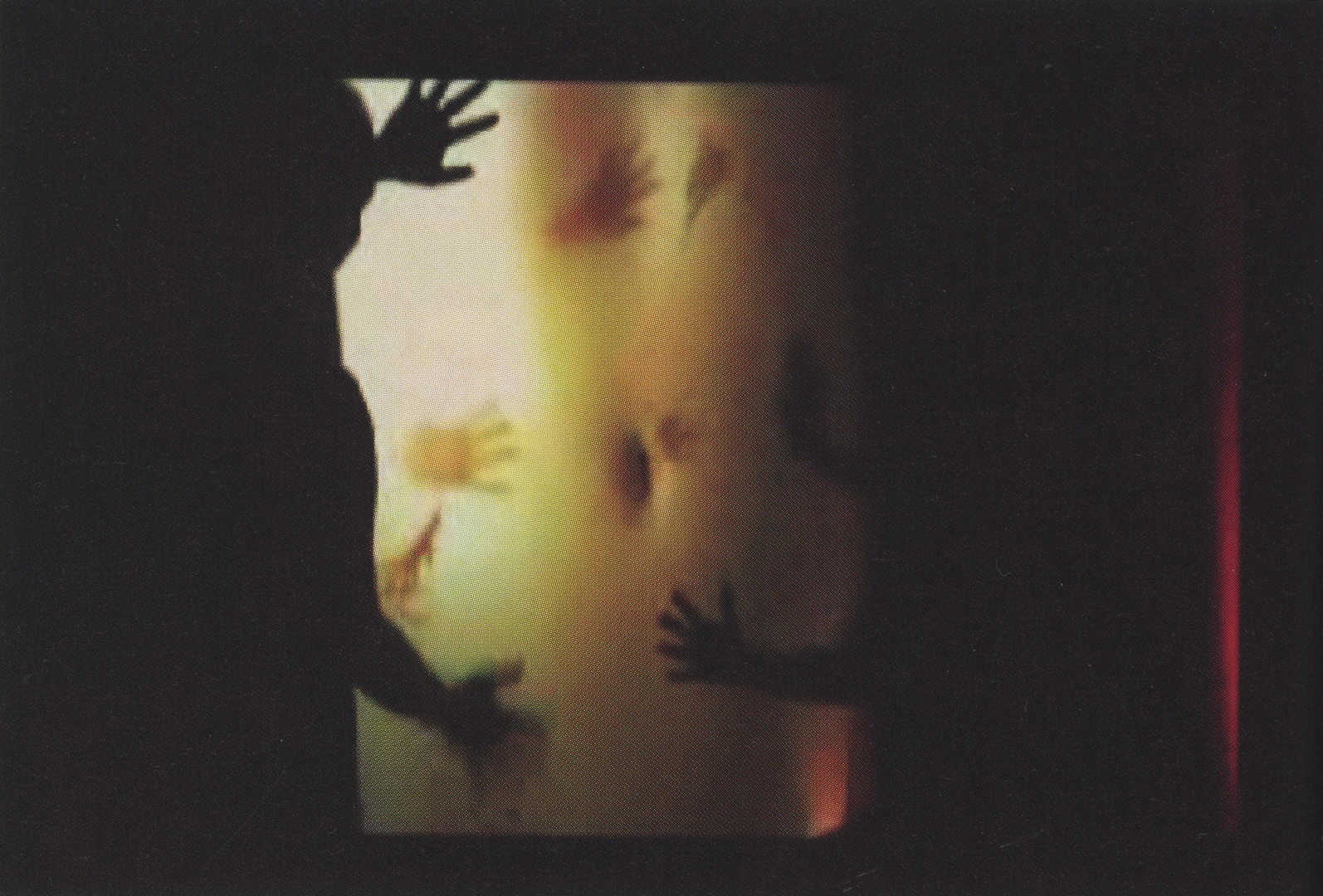Henry Kaufman: The Lightness of Your Touch
Artist(s):
Title:
- The Lightness of Your Touch
Exhibition:
Creation Year:
- 2004
Category:
Artist Statement:
In this piece one touches a larger-than-life torso that reacts. The skin of the body moves subtly as one’s hand moves over the surface. If the hand is held down for a moment and then taken away, an impression of the hand is left behind. This imprint soon lifts off the surface and begins to blow around as if it were a leaf or tissue caught in a breeze. Many people can touch the surface at the same time, sharing in the interaction.
The work employs rear infrared illumination and custom computer vision software to track the touches that the camera sees and map them to the curved screen. The touch outlines are converted to polygonal meshes that are placed in a fluid flow simulation that makes them blow like leaves in a breeze.
When someone touches you and takes their hand away, what do you feel afterwards? Is that tingling warm sensation something of them, or is it created in your body? What remains of yourself when you touch something? If you could see the imprint of your touch, how would it appear? Kaufman’s vision was to make it possible to see what you leave behind, turning that ephemeral residue into something visible. By showing people’s touches to be semi-physical objects, the work seeks to create awareness with regard to touch and, perhaps, encourage more touching. In general, people need more physical contact to be healthy and balanced.
Many Western cultures discourage touch. Whether through fear of litigation or sexual harassment, or uprightness in general, it seems that personal contact has become something to be avoided. One nurse told Kaufman that she was asked to stop hugging the patients in a nursing home even though she knew it helped them. Kaufman hopes that people will spend some time with this piece, that their explorations will lead to meditative reflection about touch and personal contact, and that their experience prompts discussion about touch-whether intimate, friendly, or for therapeutic healing-and personal boundaries in general.
This piece is part of a series composed of three related works. The first, The Memory of Your Touch, explores the material of touch itself by giving physicality and weight to the touches that people leave behind. The second (the present work), The Lightness of Your Touch, explores touch on a human body, specifically a belly, and gives the touches a behavior like leaves blowing in the wind. Finally, the third work, A Touch of Ancient Memories, explores the “touches” as handprints created by our ancestors in cave paintings around the world.







